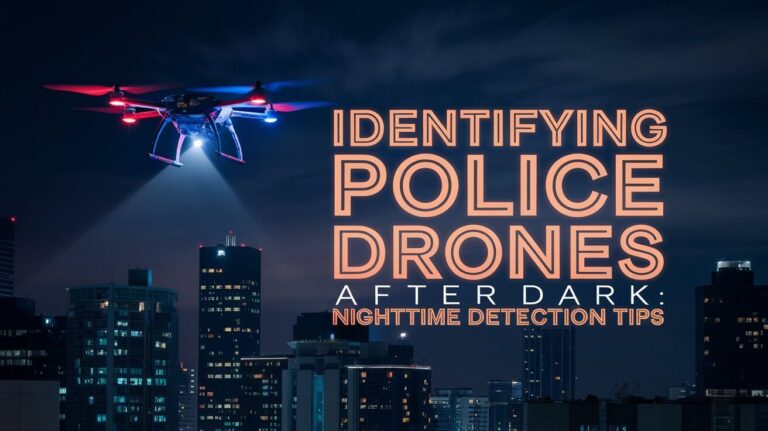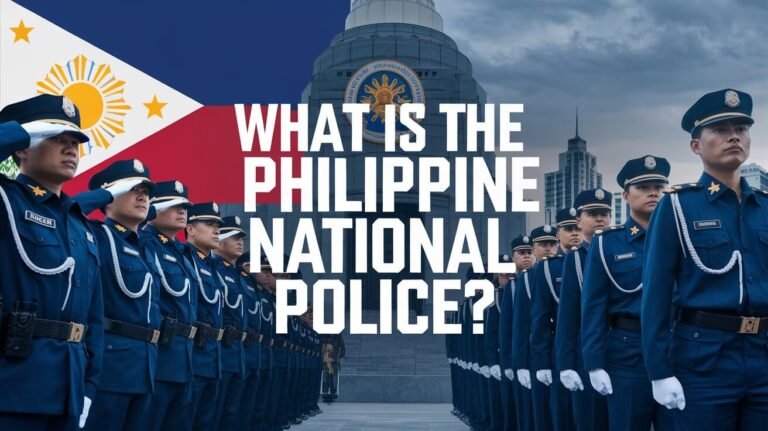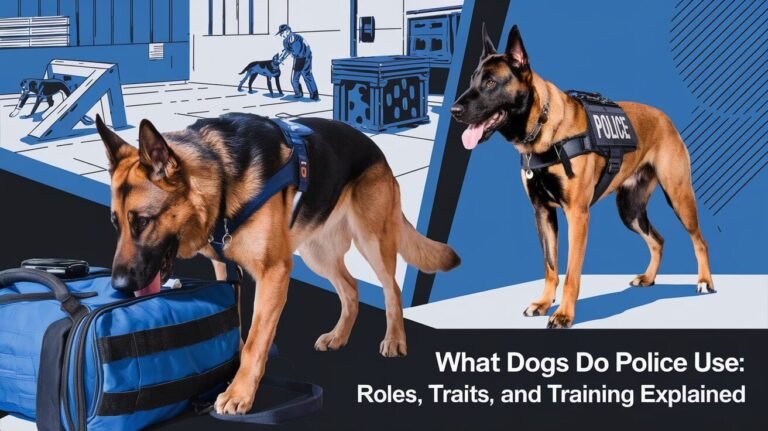10 9 Police Code: What Officers Mean by This Signal

Law enforcement communication is a critical aspect of maintaining public safety, and it relies heavily on clear and concise radio transmissions. One essential component of this communication is the use of specific police radio codes.
The 10-9 code is a vital part of this system, used to request that the sender repeat their last transmission. This ensures that messages are understood correctly, especially in high-pressure emergency situations.
Effective law enforcement communication is crucial for coordinating responses and keeping communities safe. In this article, we will delve into the meaning, usage, and significance of the 10-9 police code.
Key Takeaways
- The 10-9 code is used to request the sender to repeat the last transmission.
- Clear communication is essential in law enforcement and emergency response situations.
- Police radio codes like 10-9 are vital for effective law enforcement communication.
- Understanding these codes is crucial for those involved in law enforcement and emergency services.
- The use of specific codes helps to reduce confusion and ensure clarity in radio transmissions.
The 10-9 Police Code Explained
Police departments across the United States utilize a variety of radio codes, with the 10-9 code being particularly significant. The use of specific codes like 10-9 enhances the efficiency and clarity of law enforcement communication.
Official Definition and Meaning
According to the APCO (Associated Public-Safety Communications Officers) standards, the 10-9 code means “Repeat.” This code is used when the receiving officer needs the sender to repeat their last message, typically due to poor reception or interruption.
The 10-9 code meaning is straightforward and is a crucial part of law enforcement communication. It ensures that critical information is conveyed accurately, which is vital in high-pressure situations.
| Code | Meaning | Usage |
|---|---|---|
| 10-9 | Repeat | Requesting the sender to repeat the last message |
| Other Codes | Varies | Different situations requiring specific responses |
Radio Protocol for “Repeat Message”
When a law enforcement officer uses the 10-9 code, they are following a standardized police radio codes protocol. This protocol is designed to ensure clarity and brevity in communication, which is essential during emergency responses.
For example, if an officer receives a message that was not clear due to static or interruption, they would respond with “10-9” to request a repeat of the message. This simple yet effective protocol aids in minimizing misunderstandings and ensuring that all parties are on the same page.
Origins and Development of Police Radio Codes
The development of police radio codes has a rich history that dates back to the early days of law enforcement communication. As radio technology advanced, law enforcement agencies recognized the need for a standardized system to convey critical information quickly and efficiently.
Birth of the Ten-Code System
The ten-code system was developed to simplify communication among law enforcement agencies. The system used numerical codes to represent common phrases or messages, reducing transmission time and improving clarity. For instance, codes like “10-9” for “repeat message” or “10-4” for “acknowledged” became essential in police radio communication.
APCO’s Role in Standardization
The Association of Public-Safety Communications Officials (APCO) played a significant role in standardizing police radio codes. APCO worked to create a uniform system that could be used across different law enforcement agencies, enhancing communication and coordination. Their efforts led to the widespread adoption of the ten-code system, which has become a cornerstone of police radio communication.
| Code | Meaning | Usage |
|---|---|---|
| 10-9 | Repeat Message | Used when a message is not clearly received |
| 10-4 | Acknowledged | Used to confirm receipt of a message |
| 10-20 | Location | Used to request or provide location information |
Standardization of police radio codes has significantly improved communication among law enforcement agencies. By using a common language, officers can quickly convey critical information, enhancing response times and public safety.
Complete Ten-Code System Framework
The ten-code system is a comprehensive framework used by law enforcement agencies to facilitate clear and efficient communication. This system includes a variety of codes that correspond to different situations and messages, enabling officers to quickly convey information over radio transmissions.
The ten-code system has been widely adopted across various law enforcement agencies, providing a standardized method of communication that enhances operational efficiency. By using specific codes for different situations, officers can rapidly convey complex information without needing to spell out every detail.
Most Frequently Used Police Codes
Some of the most commonly used police codes include 10-4 for “acknowledgment,” 10-20 for “location,” and 10-33 for “emergency.” These codes are designed to be concise and easily understood, reducing the risk of miscommunication during critical situations.
- 10-4: Acknowledgment
- 10-20: Location
- 10-33: Emergency
Other codes, such as 10-9, serve specific purposes within the broader system. Understanding these codes is essential for effective communication among law enforcement personnel.
How 10-9 Fits Within the Broader System
The 10-9 code is an integral part of the ten-code system, used to indicate that a message should be repeated. This code is crucial in situations where the initial message may not have been clearly received or understood. By requesting a repeat, officers can ensure that critical information is communicated accurately.
The 10-9 code works in conjunction with other codes to provide a robust communication framework. For instance, if an officer receives a message with a code they didn’t quite catch, they can respond with 10-9 to request the message be repeated, ensuring clarity and accuracy in communication.
Regional Variations Across Police Departments
Police departments across different regions adapt the ten-code system to their specific needs, resulting in variations. While the ten-code system provides a foundational framework for law enforcement communication, its application is not uniform across all departments.
State and Local Differences
State and local law enforcement agencies often modify police codes to suit their operational requirements. For instance, some departments may use specific codes for local events or conditions that are not covered by the standard ten-code system.
A comparison of police code usage across different states reveals interesting variations. The table below highlights some differences in police code usage:
| State | Standard Code | Local Adaptation |
|---|---|---|
| California | 10-9 | Used for “Repeat Message” |
| New York | 10-9 | Used for “Repeat Message” and “Request for Backup” |
| Texas | 10-9 | Used primarily for “Repeat Message” |
Federal Agency Adaptations
Federal agencies, such as the FBI and DEA, also use the ten-code system but may adapt it for their specific needs. These adaptations can include additional codes or modified meanings for existing codes to suit their operational requirements.
Federal agencies often use a combination of standardized and agency-specific codes to enhance their communication efficiency. This tailored approach allows them to address unique situations and operational needs effectively.
Radio Communication Efficiency
Radio communication efficiency is vital for successful law enforcement operations. Effective communication ensures that critical information is conveyed quickly and accurately, which is particularly important in high-pressure situations.
Brevity Benefits in Emergency Situations
In emergency situations, every second counts. Clear and concise communication helps law enforcement officers respond rapidly and effectively. The use of codes like 10-9 enhances brevity, allowing officers to quickly understand and act on the information received.
- Reduces response time
- Increases situational awareness
- Enhances officer safety
Clarity During High-Risk Operations
High-risk operations require precise and unambiguous communication. The use of standardized codes and protocols ensures that messages are conveyed clearly, reducing the risk of misunderstandings. This clarity is crucial during operations such as hostage situations or high-speed pursuits.
- Standardized codes reduce confusion
- Clear communication protocols enhance operational effectiveness
- Officers can focus on the task at hand without communication breakdowns
Real-World Applications of 10-9 Code
In law enforcement, effective communication is crucial, and the 10-9 code plays a significant role in it. The 10-9 code is used in various real-world scenarios by law enforcement officers to ensure clear and efficient communication.
Patrol Officer Daily Usage
Patrol officers use the 10-9 code in their daily operations to request a repeat of a message they didn’t quite catch. For instance, during a high-speed chase or while responding to an emergency call, static or interference might distort the radio transmission. In such cases, officers use the 10-9 code to ask the dispatcher to repeat the message, ensuring they receive critical information accurately.
Daily usage examples include:
- Requesting a repeat of a suspect’s description
- Clarifying a vehicle’s license plate number
- Confirming the location of a call
Tactical Team Communications
Tactical teams also rely on the 10-9 code during high-risk operations. In situations where stealth is crucial, or the environment is too loud for clear communication, the 10-9 code helps team members quickly request a message repeat without compromising their position.
Tactical team communication scenarios include:
- Executing a search warrant in a noisy environment
- Conducting a surveillance operation with minimal radio traffic
- Responding to a barricaded suspect situation
The 10-9 code is an essential tool for both patrol officers and tactical teams, enhancing the effectiveness of law enforcement communication in various operational contexts.
Common Misconceptions in Popular Media
Police codes are often misrepresented in popular culture, causing public confusion. The way these codes are portrayed in TV shows and movies can be misleading, creating a distorted view of law enforcement communication.
Hollywood vs. Actual Police Practice
Hollywood frequently dramatizes police codes for entertainment value, which can lead to inaccuracies. For instance, the use of “10-9” might be depicted incorrectly or out of context, giving viewers a false impression of its meaning and usage.
In reality, law enforcement officers use codes like “10-9” to efficiently communicate during operations. The actual practice involves strict protocols and training to ensure clarity and brevity.
Public Misunderstandings About Code Usage
The public’s misunderstanding of police codes can lead to misconceptions about law enforcement procedures. Some people might believe that codes are used for secrecy, when in fact, they are primarily used for efficiency and clarity in high-pressure situations.
| Common Misconception | Actual Practice |
|---|---|
| Police codes are used to confuse or mislead the public. | Codes are used to enhance clarity and efficiency in communication. |
| Codes are used for secrecy. | Codes are standardized for brevity and clarity. |
| All police departments use the same codes. | While there’s a standard system, regional variations exist. |
Modern Technology Impact on Police Codes
The advent of modern technology has revolutionized the way police codes are utilized in law enforcement communication. Modern technology has brought about significant changes in how police officers communicate, both in terms of the tools they use and the efficiency of their communications.
Digital Radio Systems and MDTs
Digital radio systems have enhanced the clarity and security of police communications. These systems allow for clearer transmissions and reduced interference, making it easier for officers to understand critical information. Some key benefits include:
- Improved signal quality
- Enhanced security features
- Better interoperability between agencies
Mobile Data Terminals (MDTs) have also become integral, enabling officers to receive and send information digitally, thus reducing the reliance on voice communications alone.
Computer-Aided Dispatch Integration
Computer-Aided Dispatch (CAD) systems have integrated police codes into a more comprehensive communication framework. CAD systems allow for the efficient dispatching of units and the tracking of incidents, improving response times and situational awareness. Key features of CAD integration include:
- Automated incident reporting
- Real-time unit tracking
- Enhanced data analysis for strategic planning
The integration of modern technology with traditional police codes has significantly enhanced law enforcement communication, making it more efficient and effective.
Plain Language Movement in Law Enforcement
The law enforcement community has witnessed a significant shift towards plain language in recent years. This change reflects a broader effort to improve communication efficiency and clarity, particularly in high-stress situations.
The events of 9/11 and subsequent changes in law enforcement practices have played a crucial role in this shift. The need for clearer communication during complex operations became apparent, driving the adoption of plain language.
Post-9/11 Communication Changes
The aftermath of 9/11 highlighted the importance of clear and efficient communication in law enforcement. Agencies realized that the use of coded language could sometimes hinder understanding, especially during multi-agency responses.
Clear communication became a priority, leading to a reevaluation of the traditional ten-code system. The complexity of modern law enforcement operations demanded a more straightforward approach.
Agencies Transitioning Away from Codes
Some law enforcement agencies have begun transitioning away from the traditional use of police codes, opting instead for plain language. This shift is not universal, but it represents a significant change in the culture of law enforcement communication.
Benefits of plain language include improved clarity and reduced confusion, particularly in situations where officers from different agencies are working together. While the ten-code system is still widely used, the trend towards plain language is gaining momentum.
Multi-Agency Response and Code Compatibility
The success of multi-agency operations hinges on the interoperability of their communication systems. When law enforcement agencies from different jurisdictions respond to an incident together, their ability to communicate effectively is crucial. This is where code compatibility plays a significant role.
Interoperability Challenges
One of the main challenges in multi-agency responses is ensuring that different agencies can communicate seamlessly. Different police departments and agencies may use varying ten-codes or communication protocols, which can lead to confusion and misinterpretation.
A key issue is the lack of standardization across agencies. For instance, a code used by one department might have a different meaning in another. This discrepancy can hinder effective communication during critical incidents.
Standardization Efforts Nationwide
To address interoperability challenges, there are ongoing efforts to standardize police codes nationwide. The Association of Public-Safety Communications Officials (APCO) has been at the forefront of these efforts, advocating for standardized ten-codes and communication protocols.
| Agency | Standardization Effort | Status |
|---|---|---|
| FBI | Adoption of APCO ten-codes | In Progress |
| State Police | Regional code standardization | Implemented |
| Local Departments | Training on standardized codes | Ongoing |
Conclusion
The 10-9 police code plays a vital role in law enforcement communication, facilitating clear and efficient radio transmissions. As discussed, this code is part of a broader system of police radio codes designed to standardize communication.
Law enforcement agencies rely on the 10-9 code to request message repetition, ensuring that critical information is conveyed accurately. The use of such codes is essential in high-pressure situations where clarity is paramount.
Effective law enforcement communication is crucial for public safety, and the 10-9 police code is a key component of this process. As technology continues to evolve, understanding the significance of police radio codes like 10-9 remains important for appreciating the complexities of modern law enforcement operations.
By grasping the meaning and usage of the 10-9 code, we gain insight into the intricacies of police communication and the measures in place to ensure efficient and clear information exchange.
Common Questions
What does the 10-9 police code mean?
The 10-9 police code is used to ask the sender to repeat their last message, ensuring clarity in radio transmissions, particularly in situations where the message was not received clearly or was interrupted.
Why is the 10-9 code important in law enforcement communication?
The 10-9 code is crucial for effective communication, especially in emergency situations, as it enables law enforcement officers to receive critical information accurately.
Who developed the ten-code system used by law enforcement?
Association of Public-Safety Communications Officials (APCO) was instrumental in creating a standardized ten-code system that could be used across different law enforcement agencies.
Are police codes, including 10-9, used uniformly across all law enforcement agencies?
While the ten-code system provides a standardized framework, there are regional variations in how police codes are used, with state and local agencies, as well as federal agencies, adapting these codes to suit their specific needs.
How has modern technology impacted the use of police codes like 10-9?
Modern technology, including digital radio systems and computer-aided dispatch, has enhanced the efficiency and clarity of law enforcement communications, although the use of codes like 10-9 remains significant.
Is there a movement away from using police codes in law enforcement communication?
Yes, there has been a movement towards using plain language in law enforcement communication, particularly after significant events like 9/11, with some agencies transitioning away from using codes, opting for clearer, more straightforward communication.
Why is code compatibility important during multi-agency responses?
Ensuring that communication systems are compatible is crucial when multiple agencies respond to an incident, as it addresses interoperability challenges and facilitates effective coordination.
How do police codes like 10-9 contribute to radio communication efficiency?
The use of codes like 10-9 enhances brevity and clarity in law enforcement radio communications, ensuring that critical information is communicated efficiently, particularly in emergency situations.
Are police codes like 10-9 used in real-world law enforcement scenarios?
Yes, the 10-9 code is used in various real-world scenarios by law enforcement officers, from daily patrols to tactical operations, playing a crucial role in ensuring that communications are clear and effective.
How are police codes portrayed in popular media, and is it accurate?
Portrayal of police codes in popular media often differs from actual police practice, leading to misconceptions among the public, and it’s essential to understand the actual usage and significance of codes like 10-9.






